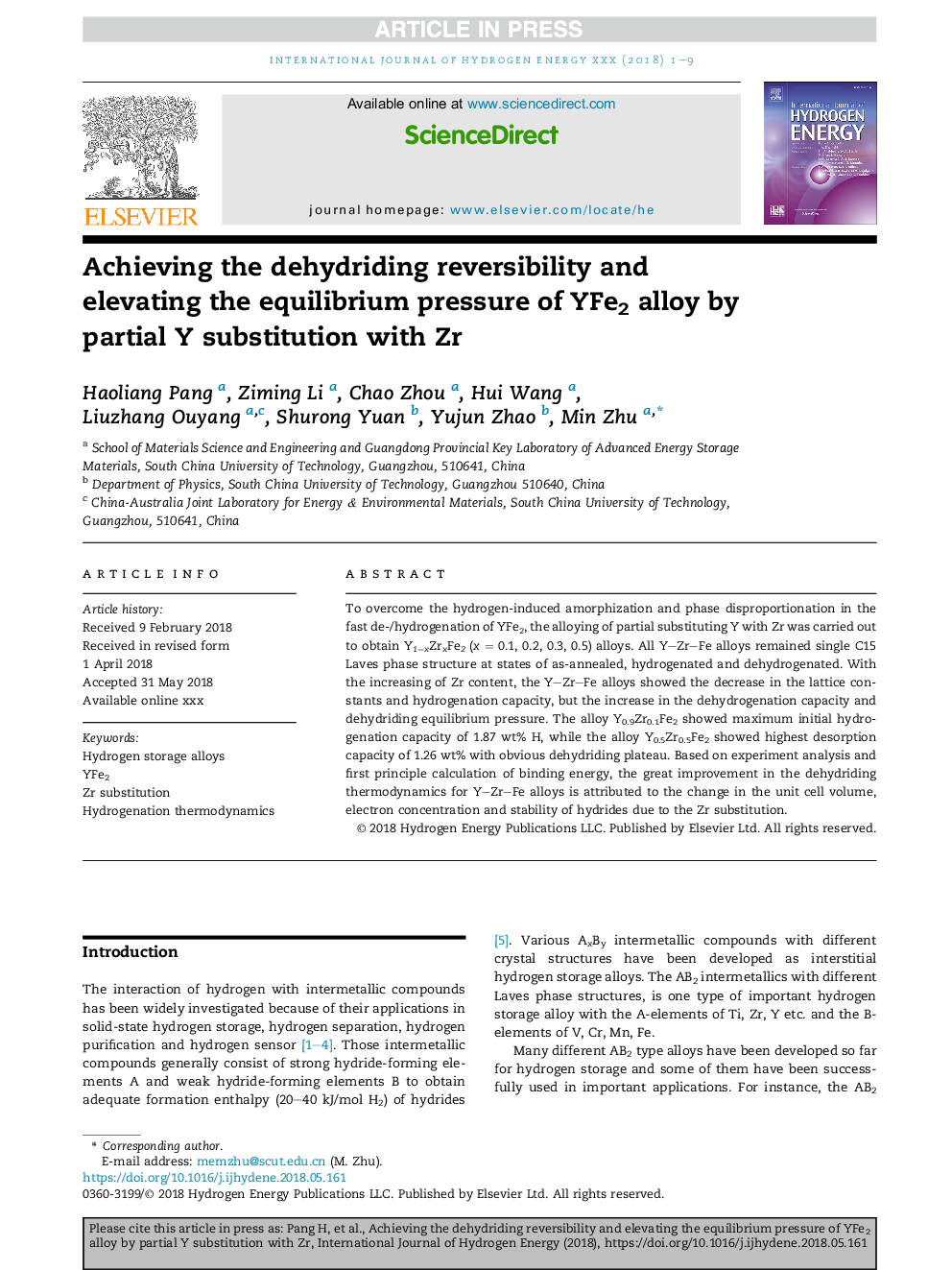| Article ID | Journal | Published Year | Pages | File Type |
|---|---|---|---|---|
| 7705371 | International Journal of Hydrogen Energy | 2018 | 9 Pages |
Abstract
To overcome the hydrogen-induced amorphization and phase disproportionation in the fast de-/hydrogenation of YFe2, the alloying of partial substituting Y with Zr was carried out to obtain Y1âxZrxFe2 (x = 0.1, 0.2, 0.3, 0.5) alloys. All YZrFe alloys remained single C15 Laves phase structure at states of as-annealed, hydrogenated and dehydrogenated. With the increasing of Zr content, the YZrFe alloys showed the decrease in the lattice constants and hydrogenation capacity, but the increase in the dehydrogenation capacity and dehydriding equilibrium pressure. The alloy Y0.9Zr0.1Fe2 showed maximum initial hydrogenation capacity of 1.87 wt% H, while the alloy Y0.5Zr0.5Fe2 showed highest desorption capacity of 1.26 wt% with obvious dehydriding plateau. Based on experiment analysis and first principle calculation of binding energy, the great improvement in the dehydriding thermodynamics for YZrFe alloys is attributed to the change in the unit cell volume, electron concentration and stability of hydrides due to the Zr substitution.
Related Topics
Physical Sciences and Engineering
Chemistry
Electrochemistry
Authors
Haoliang Pang, Ziming Li, Chao Zhou, Hui Wang, Liuzhang Ouyang, Shurong Yuan, Yujun Zhao, Min Zhu,
